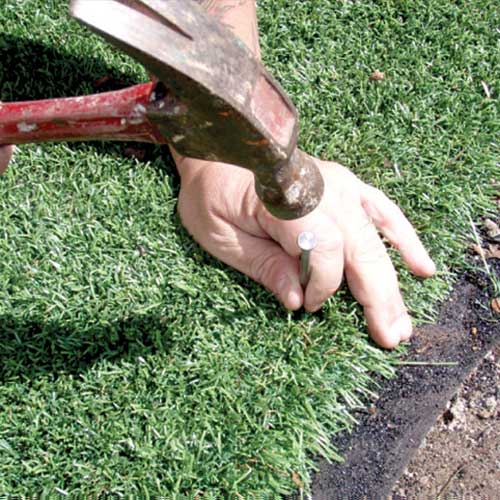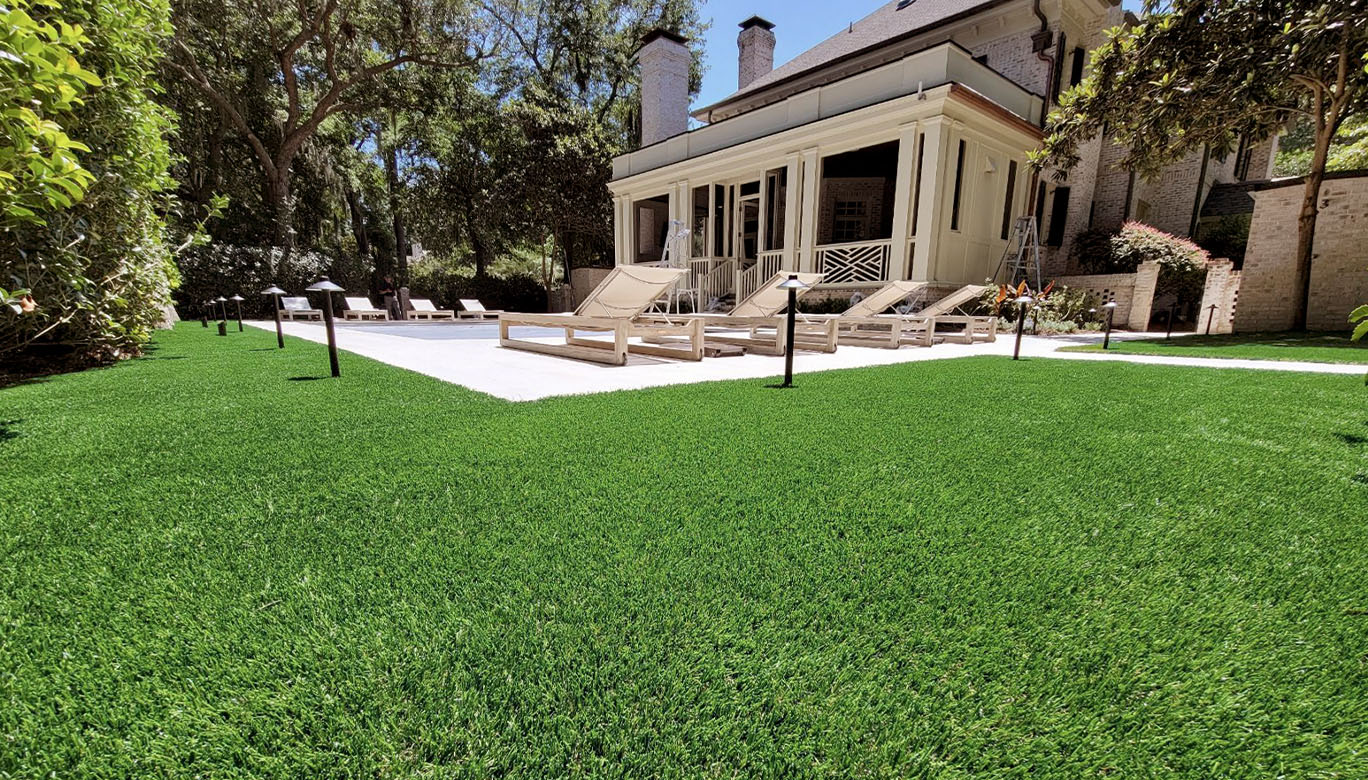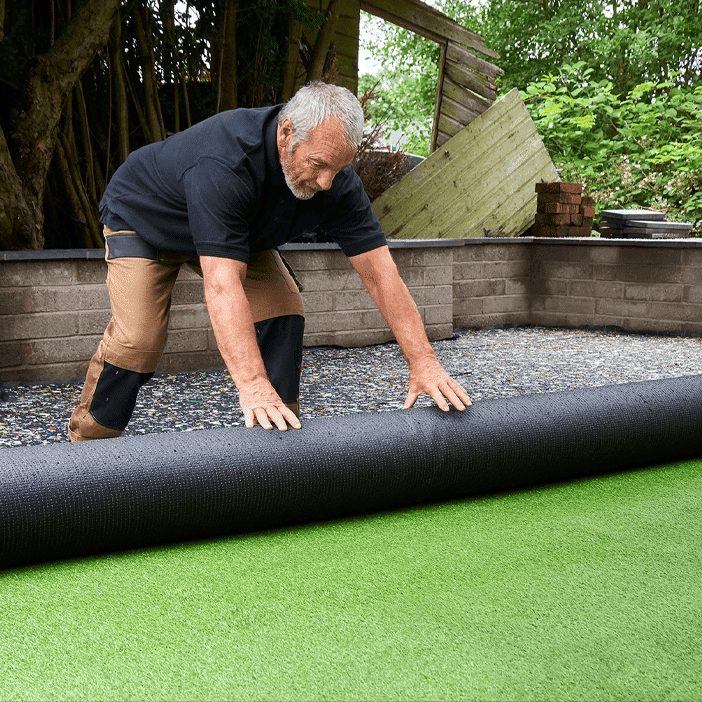Leading Phoenix Turf Companies Offering High-End Synthetic Lawn Solutions
Explore the Environmental Perks of Opting for Artificial Turf Solutions
The fostering of fabricated turf services presents an engaging opportunity to attend to pushing environmental difficulties. By substantially reducing water use and decreasing the application of hazardous chemicals, these choices not just advertise sustainable landscaping however likewise safeguard local ecosystems. The reduced carbon impact connected with decreased upkeep activities contributes to a more lasting strategy to land monitoring. Nevertheless, the effects of these benefits extend beyond simple conservation efforts, raising inquiries regarding their long-term influence on environment preservation and general ecological balance. Checking out these dimensions discloses a complex interplay worth taking into consideration.
Water Preservation Advantages
One of the most considerable benefits of synthetic grass is its capacity to preserve water. In comparison, fabricated grass does not require watering, considerably reducing the total need for water resources.
By removing the demand for normal watering, synthetic grass adds to lasting landscape practices and assists mitigate the ecological impact of too much water consumption. The conservation of water expands to the reduction of runoff, which can lead to dirt erosion and waterway contamination.
In addition, the setup of synthetic grass permits property owners and districts to assign water resources extra efficiently, concentrating on necessary uses such as alcohol consumption water and farming. The change in the direction of man-made turf not only advertises liable water usage but likewise lines up with wider environmental objectives intended at protecting natural deposits.
As neighborhoods progressively prioritize sustainability, the water conservation benefits of synthetic grass present a compelling instance for its fostering in household and industrial landscaping jobs.
Lowered Chemical Use
The change to synthetic grass significantly decreases the reliance on chemical therapies frequently made use of in all-natural lawn upkeep. Conventional turf management commonly includes the application of plant foods, herbicides, and chemicals to promote growth and control parasites. These chemicals can posture threats to human health and wellness, local wild animals, and the setting, adding to soil and water contamination.
In contrast, fabricated lawn removes the demand for these dangerous substances. By decreasing the release of artificial compounds into the ecological community, artificial turf advertises much healthier dirt and water systems.
Moreover, the lack of chemical overflow connected with synthetic grass setups assists protect regional waterways from contamination, sustaining aquatic life and preserving biodiversity. Arizona artificial turf. As communities significantly focus on lasting practices, choosing synthetic grass offers a practical remedy that lines up with environmental conservation objectives. Through this change, property owners can delight in lush eco-friendly areas without endangering eco-friendly health and wellness, leading the way for an extra sustainable future
Lower Carbon Impact

Furthermore, the setup of synthetic grass can lead to significant water conservation. All-natural yards need substantial amounts of water for irrigation, which not just adds to the carbon impact connected with water extraction and treatment however also pressures local water resources. On the other hand, man-made grass needs minimal maintenance, calling for no watering, thereby considerably lowering water usage and its linked power costs.
Furthermore, the long life of artificial lawn adds to its reduced carbon site here effect. With a lifespan of as much as 15 years or even more, the demand for regular replacements is reduced, leading to much less waste and lower energy consumption in production and disposing of standard turf alternatives. Generally, synthetic grass presents a sustainable alternative for environmentally mindful landscaping.
Environment Preservation
Environment conservation is a vital factor to consider in the debate over landscaping options, specifically when contrasting fabricated lawn to natural yard. Natural grass yards often require considerable maintenance, consisting of the usage of chemicals, plant foods, and herbicides, which can adversely impact neighborhood communities. These browse around these guys chemicals can seep right into the dirt and rivers, damaging indigenous vegetation and animals and interfering with local environments.
On the other hand, synthetic grass provides a chance to minimize the eco-friendly footprint of landscaping. By going with artificial turf, home owners can decrease the disturbance of natural environments connected with standard lawn treatment practices. Fabricated lawn gets rid of the need for damaging chemicals, thus securing nearby wildlife and preserving the integrity of surrounding ecosystems. Additionally, the installment of synthetic turf can result in the conversion of previous grass locations into even more biodiverse landscapes, such as pollinator gardens or native plant areas, which can sustain local wildlife.
Ultimately, the transition to man-made grass not only saves water and minimizes maintenance efforts but additionally fosters a more unified partnership between human activities and the natural surroundings, advertising habitat preservation at the same time.
Long-Term Sustainability
Long-term sustainability is a critical aspect in reviewing the benefits of synthetic turf over typical yard yards. One of one of the most substantial benefits of fabricated lawn is its longevity; it can last as much as 15-20 years with marginal upkeep, whereas all-natural grass needs constant reseeding and replacement. This long life reduces the need for continuous resources, such as water, fertilizers, and chemicals, which are important for preserving a healthy turf yard.
Furthermore, synthetic turf adds to a reduction in carbon discharges related to yard care tools. Conventional grass frequently call for gas-powered mowers, leaners, and blowers, all of which add to air pollution. Turf installation phoenix az. In comparison, synthetic turf eliminates the need for such devices, advertising a cleaner environment
Moreover, the manufacturing of synthetic grass significantly makes use of recycled materials, boosting its sustainability account. As producers take on green techniques, the environmental footprint of synthetic grass remains to decrease.

Conclusion
The fostering of man-made grass remedies offers substantial environmental benefits, including significant water conservation, lowered dependence on damaging chemicals, and a lower carbon footprint. Moreover, synthetic grass aids in protecting all-natural habitats by minimizing land disturbance and promoting long-term sustainability with making use of sturdy products. Jointly, these aspects highlight the potential of man-made grass to contribute favorably to environmental health and provide a feasible alternative to traditional landscape design methods in an increasingly resource-conscious globe.
In contrast, artificial grass does not need watering, substantially decreasing the total demand for water resources. By lessening the release of synthetic substances into the ecosystem, fabricated lawn promotes much healthier soil and water systems.
In addition, the installation of fabricated grass can result in substantial water preservation. In comparison, synthetic turf needs very little maintenance, needing no watering, thereby dramatically reducing water use and its associated power prices.
